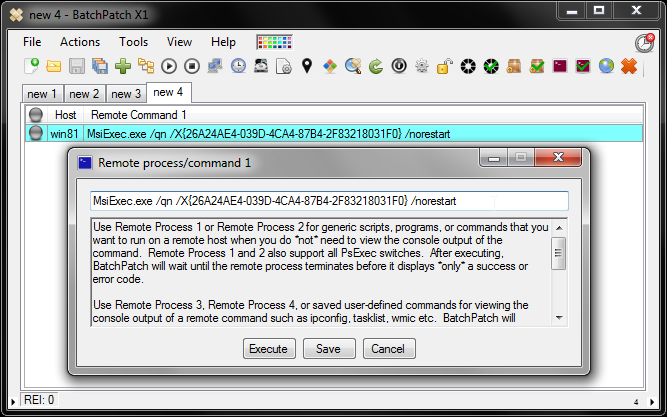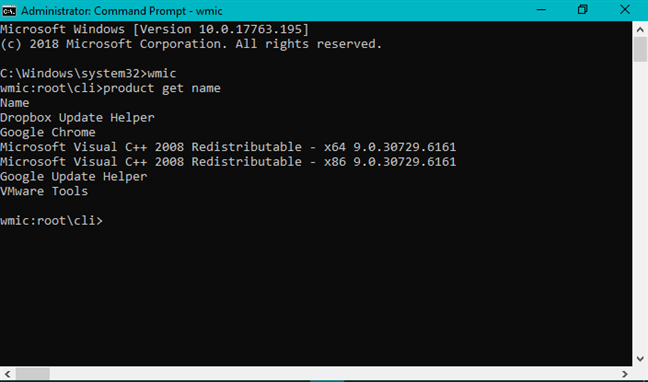

If you aren't familiar and want to know more this TechNet article will give you a very good primer:

WMIC can be helpful in many ways for administrators, however I'm not going to go into heavy explanation of all the features in this article. My new preferred approach utilizes the WMIC command. Recently, I have been using a different technique to uninstall software.
#WMIC UNINSTALL PRODUCT LIKE SOFTWARE#
This would require multiple MSIEXEC commands to address these software installations with different GUIDs. A software product version 7.1.2 may have a different GUID from that of version 7.1.5. If you are in a situation with multiple administrators, this could be difficult for those who did not write the script to know what program it is supposed to remove.Īnother limitation that I have run into using the GUID uninstall method is that minor version changes of the same software can have different GUIDs.
#WMIC UNINSTALL PRODUCT LIKE PROFESSIONAL#
Looking at the following GUID for Office 2007 Professional /qn

I do have some issues with it however, the first being that the GUID method is not very user friendly. I have used this many times in the past and this method does work to get software uninstalled. Once found, the registry key should have an UninstallString entry that should contain the MSIEXEC command that uses the GUID of the program to uninstall it. HKEY_LOCAL_MACHINE\Softwar e\Microsof t\Windows\ CurrentVer sion\Unins tallĪnd look around for an entry matching the software you want to uninstall. One answer that I see often recommended is to use the registry uninstall strings, as described here:īasically, you open up RegEdit, navigate to This may work well if you have to uninstall from just a handful of computers, but what about if you are responsible for managing hundreds or thousands of computers? Now every administrator knows about uninstalling software from the Add/Remove Programs (or Programs and Features) tab in Control Panel. The question posed is usually something along the lines of "We have software X installed and need to uninstall it for reason Y" or some other variant of the same question. Recently I have been answering a lot of questions like this in IT forums that I frequent.


 0 kommentar(er)
0 kommentar(er)
